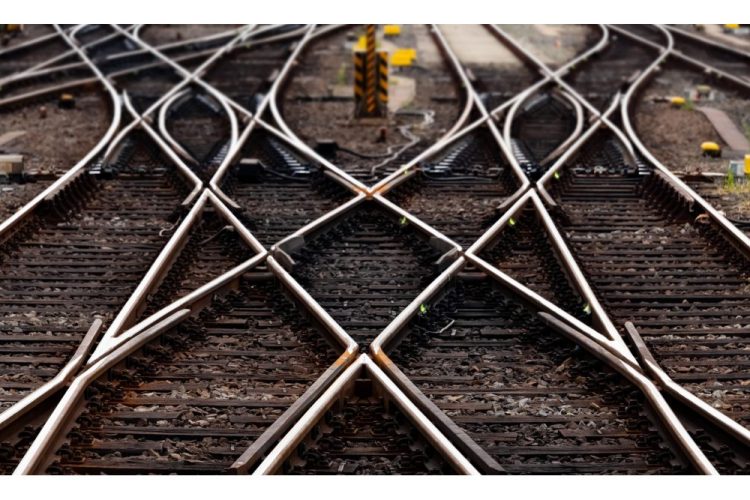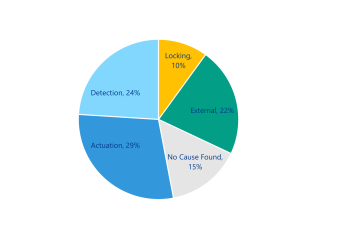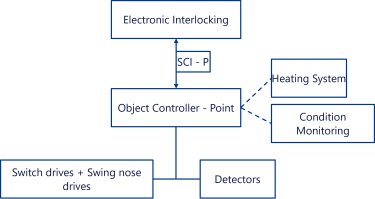Turnout system development for Rail Baltica project
Posted: 21 December 2023 | Andrejs Mislēvičs, Imants Pizelis | No comments yet
Rail Baltica is a green field railway project for construction of the new high-speed line from Tallinn through Riga and Kaunas to Poland and branch connection to Vilnius with the overall length of 870 km. The project decided to conduct a centralized turnout procurement, as it would allow to develop a state-of-the-art turnout solution with focus on its operational costs and availability, Imants Pizelis, Railway Systems Engineer, RB Rail AS, and Andrejs Mislēvičs, Deputy Head of Systems & Operation Department, RB Rail AS explain.


Background
During preparation for the procurement, Rail Baltica global project explored the turnout supplier market to find out which solutions in the design of the turnouts could reduce the operational costs. It was discovered that most of the turnouts on the market have a detection system, which requires periodic adjustment and has limited options for redundancies, and therefore negatively affects the availability of the turnout system. Also, maintenance-free sensors for detection do are not yet available on the market, despite the availability of the technology. In addition, it was noticed that interoperability and standardisation of turnout solutions has not yet been achieved. Interfaces between turnout and the interlocking system which operates and controls the turnout are heavily dependent on the interlocking system setup and manufacturer. However, the development and the first implementation of the EULYNX standard is a good starting point to solve this problem and initiate further development of the turnout`s detection system.
Rail Baltica experts are focused on detection reliability as the latest research as part of In2Rail Deliverable D02.1 – Development of Novel S&C Motion Locking Mechanisms Design Concept Report[1], suggests that the largest causes of turnout failures for existing systems are detection with a score of 24% and actuation with 29%, as indicated below:


Figure 1: Percentage of failures attributed to POE sub-systems.
[1] Development of Novel S&C Motion Locking Mechanisms Design Concept Report: https://ec.europa.eu/research/participants/documents/downloadPublic?documentIds=080166e5b36af286&appId=PPGMS
Problem
Over the years of development of electronic technology, a large number of interlocking systems were developed around Europe. As interlocking systems ensure safe train movements according to national operational regulations, their functionality differs from country to country. The architecture of interlocking contributes to this main function of the system. Increasing demand on train traffic triggered the need for development of electronic interlocking systems to allow increase of capacity, reliability, availability, and maintainability of infrastructure. The turnout system being a part of infrastructure connects two large subsystems, namely, railway track (INF subsystem) and control, command and signalling (CCS subsystem).
Historically, the turnout system includes track part, actuation, locking, detection, and heating subsystems. Since our focus is on the detection subsystem of the turnout, it was noted that the development of this subsystem depends on the interfaces with interlocking, and it is usually part of interlocking supply scope.
The fact that the scope of interlocking supplier includes a detection system, creates a situation where the development of detection solution is limited by interlocking system and interface. This, in its turn, limits the development of the entire turnout system and its subsystems. As the turnout is a safety-critical system, it complicates further cooperation between the turnout and interlocking suppliers. As a result, the detection system has a design that dates back many decades and is not up-to-date with today’s state of technology.
It also limits the development of a fully interoperable turnout system with possibility to operate safely in a degraded state using redundancies. This is when some of the rail detectors are faulty, and detection is provided by the remaining detectors without compromising the safety. That degraded operation is difficult to achieve with commonly used turnout detection which is based on contacts and microswitches.
One of the reasons is that these detectors provide only “Yes” or “No” status of the target position, and do not have visibility of intermediate status. Also, they require periodic adjustment and maintenance, which limits condition monitoring capabilities. However, contactless detectors with significantly reduced required maintenance are not commonly available on the market. One of the reasons for this is the interface between sensors inside detector and logic devices of interlocking.
Expected solution
Turnout procurement for Rail Baltica project will try to reduce limitations of the turnout technical solution described above. The scope and responsibilities of the turnout supplier and interlocking supplier are defined in a way that it does not limit the development of the turnout system. The schematic diagram below illustrates the main subsystems and interfaces of Rail Baltica turnout system and its interface to interlocking. SCI-P interface is a responsibility border between two suppliers.


Figure 2: Proposed interfaces between electronic interlocking and Turnout Control Unit
Since most of the necessary technologies are available and well tested, Rail Baltica aims to have a functioning turnout system within two years. As part of this development, not only the detection subsystem, but also track, actuation and heating subsystems are expected to see some improvements using the latest technologies.
More information regarding Rail Baltica implementation plans is available on the global project’s official website www.railbaltica.org.


